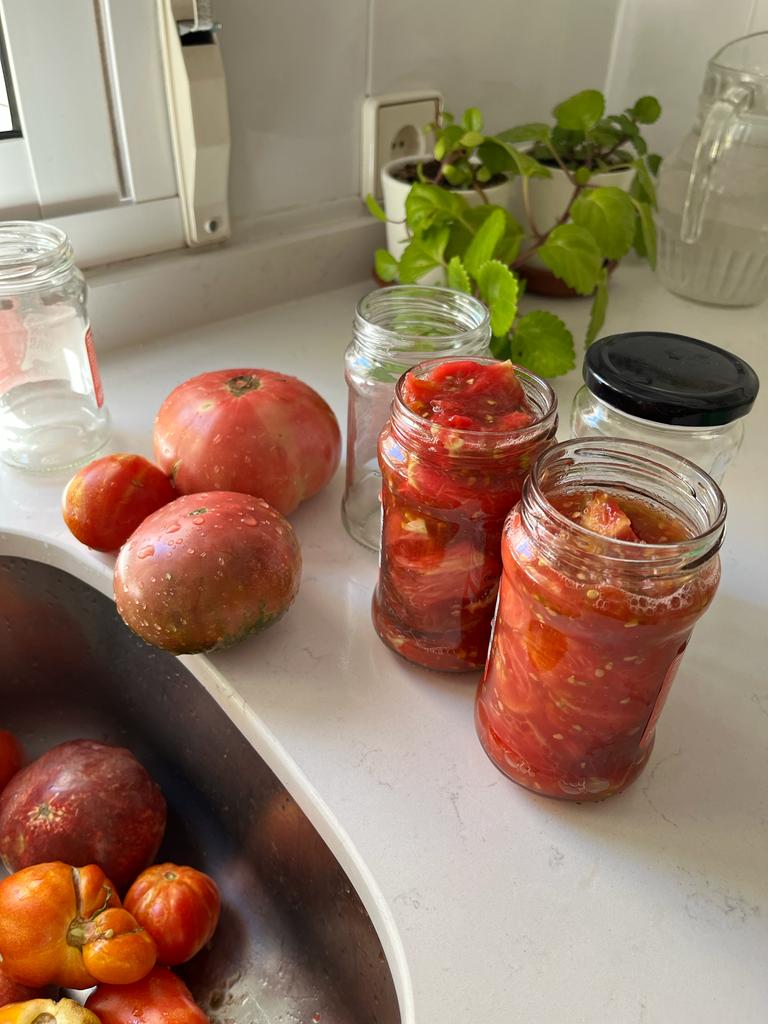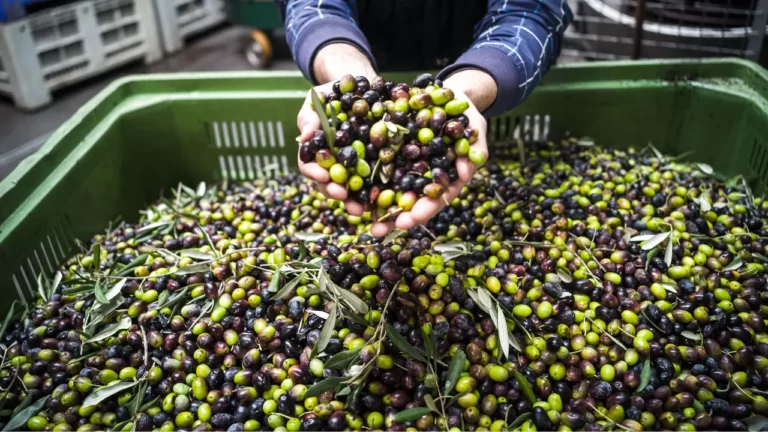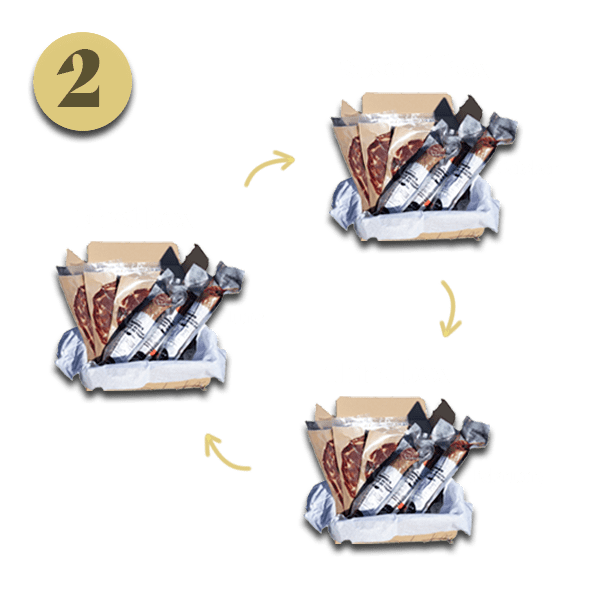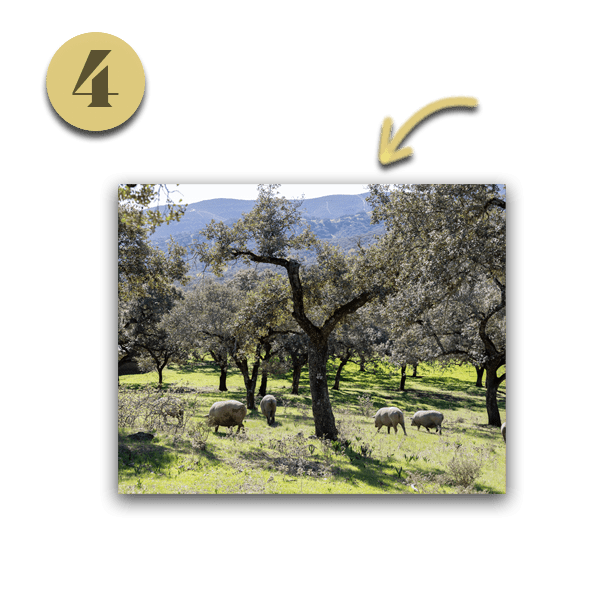Farmers and ranchers play an important role in protecting the environment, yet their practices are often at odds with this goal. By implementing sustainable agricultural methods such as crop rotation, cover cropping, and water conservation, however, farmers and ranchers can not only reduce their environmental impact but also increase their yields and profits. In this article, you’ll learn how to make your farm or ranch more sustainable and environmentally friendly.
Table of Contents
Introduction
Farming and ranching are critical for sustaining life on our planet. The agricultural sector is instrumental in producing the food and fiber that we need, while preserving a healthy environment at the same time. However, if it is not managed properly, the agricultural sector can have a negative impact on the environment. Fortunately, there are numerous sustainable farming methods that farmers and ranchers can employ to minimize their environmental footprint and care for the environment in an effective manner. This article looks at some of these methods, how livestock production can affect the environment, how grazing systems can be managed responsibly, as well as practical steps for farmers and ranchers to take in order to preserve and protect the environment.
The key to caring for the environment lies in utilizing sustainable agricultural methods such as crop rotation, cover cropping, and water conservation. These practices have been around for centuries and have proven to be both effective and efficient. Crop rotation involves planting different crops in different fields each year in order to improve soil fertility and reduce pests. Cover cropping is another practice where plants are grown between seasons to protect topsoil from wind erosion and rainfall runoff. Finally, water conservation techniques such as drip irrigation or low-till farming help reduce water usage while still providing adequate moisture for the plants.
In addition to sustainable farming practices, livestock production can also have an impact on the environment. It is important to manage grazing systems responsibly in order to reduce soil erosion and vegetation loss. Overgrazing can cause land degradation, but managing grazing systems intelligently can help maintain a healthy balance of plant life while simultaneously increasing productivity. Rotational grazing is one way this can be done – animals are moved from one area of pasture to another periodically in order to give each area enough recovery time before being grazed again.
Finally, farmers and ranchers should also take practical steps to reduce their environmental footprint wherever possible. This could involve choosing energy-efficient equipment, utilizing renewable energy sources such as wind or solar energy, composting waste materials instead of sending them to landfills, or encouraging biodiversity by planting trees or establishing wildlife corridors. Additionally, farmers should seek out certification programs that recognize responsible land management practices (such as organic certification) and consider joining local initiatives or cooperatives that are dedicated to improving environmental stewardship within their communities.
In conclusion, farmers and ranchers play an integral role in protecting the environment. By utilizing sustainable agricultural practices such as crop rotation, cover cropping, and water conservation
Sustainable Agricultural Methods
Sustainable agricultural methods offer the potential to reduce environmental degradation while increasing crop yields. Crop rotation is one such method that helps preserve soil fertility and minimize pests. By planting different types of crops in a given field each year, this technique helps maintain soil quality and creates a complex environment that naturally repels insects and weeds without the use of harmful chemicals or pesticides. Cover cropping is another effective way to increase organic matter in the soil and prevent erosion. This practice involves planting crops that act as ground covers when other crops are not present; these plants absorb excess water and smother weeds, ultimately enhancing soil fertility over time. Additionally, good water conservation practices can help farmers reduce irrigation costs and support healthy soils. Strategies for achieving this include using low-pressure irrigation systems, installing water-conserving features on farm equipment, and collecting rainwater for use in irrigating fields.
The importance of conservation practices on farms is immense; by implementing sustainable methods like crop rotation and cover cropping, farmers can maximize their yields while preserving natural resources. Furthermore, measures like water conservation can also significantly reduce irrigation costs, allowing farmers to save money while practicing responsible stewardship of our planet’s resources. By utilizing these techniques in combination with responsible grazing systems (discussed later), farmers will be able to ensure their operations are conducted with minimal environmental harm.
Crop Rotation
Crop rotation is an important sustainable agricultural method that can be used to care for the environment. This practice involves rotating crops with different growing seasons in the same field, allowing farmers and ranchers to successfully manage their land while preserving its natural resources and protecting the environment. Crop rotation helps promote healthy soil, reduce erosion, prevent nutrient leaching, and decrease reliance on chemical fertilizers and pesticides.
For instance, by rotating crops, farmers can maintain healthier soil since each type of crop extracts different levels of nutrients from the soil. As a result, soil fertility is maintained and nutrient leaching is prevented. Furthermore, this practice helps reduce soil erosion since crop root systems vary, providing protection from wind and water damage. In addition, crop rotation allows for a balanced and diverse system of land use which helps preserve plant genetic diversity and reduces the amount of pests in fields through natural predation. By cycling between different crops, farmers are able to keep their production costs low as they do not need to rely as heavily on chemical fertilizers and pesticides to maintain crop yields.
Overall, crop rotation is an essential tool for farmers and ranchers in order to protect and sustain the environment. Through this practice, farmers can ensure that their land is able to provide continuously high yields while also preserving its natural resources for future generations. In order to make the most out of this sustainable agricultural method, it is important for farmers and ranchers to be familiar with different types of crops and their growing cycles in order to design appropriate crop rotations for their particular land condition. With careful planning and implementation of this technique, farmers and ranchers can successfully manage their land in a way that is both beneficial to agriculture production and protective of the environment.
Cover Cropping
Cover cropping is an effective agricultural practice for reducing soil erosion and improving soil fertility. Cover crops are planted between main crops during fallow periods to protect soils against erosion and reduce nutrient leaching. They also help improve soil fertility by adding organic matter to the soil, enhancing water retention, and providing habitat for beneficial organisms such as insects and pollinators. In addition, cover cropping can provide weed control by preventing weeds from establishing themselves in between main crop cycles.
Cover crops also play an important role in increasing biodiversity in agricultural ecosystems. The presence of these different plant species can provide habitat for beneficial insects and pollinators, which have been shown to have a positive impact on crop yields. By providing this habitat, cover crops can help ensure the health of agricultural ecosystems, resulting in stronger yields and healthier soils.
The organic matter found in cover crops can also aid in nutrient cycling and carbon sequestration. This type of organic matter helps to maintain soil fertility by binding with nutrients and releasing them back into the soil as needed. It also helps to sequester carbon from the atmosphere, thus playing a role in mitigating climate change.
Overall, cover cropping is an extremely effective way for farmers and ranchers to care for the environment by protecting soils against erosion, increasing biodiversity, improving soil fertility, and aiding in nutrient cycling and carbon sequestration. Not only does it benefit the environment, but it can also help farmers increase their yields while reducing their input costs over time. As such, it is an invaluable tool for farmers looking to implement sustainable practices on their farms.
Water Conservation
Water conservation is a key component of sustainable agricultural practices. With water scarcity becoming an increasingly important issue globally, it is essential for farmers and ranchers to use water efficiently in order to ensure that there is enough available for future generations. A variety of methods can be used to reduce water waste on farms and ranches, such as improving irrigation systems, using drought-tolerant plants, and collecting rainwater for use in irrigation or animal watering troughs. Additionally, farmers and ranchers must be aware of their local water resources in order to properly conserve them. This includes monitoring stream flow levels, managing groundwater use, minimizing erosion and sedimentation, and avoiding pollution of waterways by runoff from farms or pastures.
Improving irrigation systems is one way that farmers can conserve water. This can involve replacing inefficient sprayers and hoses with more efficient drip irrigation systems, which deliver water directly to the soil near the plant’s root system. This reduces water loss due to evaporation and runoff. Drought-tolerant plants are also a great way to conserve water; they require less water than traditional crops and can help reduce the need for frequent irrigation. Lastly, collecting rainwater for use in irrigation or animal watering troughs can help offset the need for additional sources of water.
In addition to these methods, farmers and ranchers should also be aware of their local water resources in order to properly conserve them. This includes monitoring stream flow levels, managing groundwater use, minimizing erosion and sedimentation, and avoiding pollution of waterways by runoff from farms or pastures. Farmers and ranchers can also take advantage of programs offered by federal, state, and local governments that provide incentives and support for conservation practices such as improved irrigation systems, native vegetation restoration, and reduced tillage operations.
By implementing these methods, farmers and ranchers can ensure that they are using water responsibly while still being able to meet their yield goals. Water conservation is an essential part of environmental protection, so it is important that all farmers and ranchers do their part to protect this valuable resource.
Environmental Impact of Livestock Production
Livestock production is one of the primary causes of environmental degradation due to overgrazing, habitat destruction caused by livestock enclosures, and the release of harmful greenhouse gases such as methane from animal waste. Large-scale livestock production can lead to soil erosion, increased sedimentation in streams, decreased plant coverage which harms biodiversity, and overuse of water resources. In addition to these issues, livestock production also produces large amounts of nitrous oxide emissions, which are up to 300 times more potent than carbon dioxide as a greenhouse gas contributor.
The environmental effects of livestock production are compounded when animals are kept in overcrowded conditions or poorly managed feedlots and pastures. Overgrazing can decrease plant coverage, which leads to losses in native biodiversity and soil erosion due to lack of vegetation cover. This has serious impacts on water quality as well as land productivity, leading to algal blooms and reduced levels of soil fertility. Livestock enclosures can also degrade habitats by preventing the movement of wildlife, leading to disruptions in ecosystem processes such as pollination and seed dispersal.
In order to reduce the environmental impacts of livestock production, farmers must utilize responsible grazing systems that are designed to maximize forage utilization while minimizing soil disturbance or damage to vegetation cover. Rotational grazing systems involve moving livestock between different pastures or grazing periods throughout the year. This allows for recovery periods for the land, during which time grasses can regrow and soils can be replenished with nutrients from manure. Other strategies such as managed intensive rotational grazing (MIRG) can be used to focus grazing on specific areas at certain times of the year in order to reduce soil compaction, increase organic matter content, improve water infiltration rates, and reduce erosion.
Finally, farmers should consider reducing their herd sizes where possible in order to reduce the pressure on land resources and ecosystems. This may involve switching to breeds that produce less methane gas or are better adapted to local climates. It is also important for farmers and ranchers to monitor their lands for potential environmental impacts such as excessive dust or nutrient runoff into adjacent waterways. By utilizing sustainable agriculture methods and responsibly managing their herds and grazing practices, farmers and ranchers can play an important role in protecting our environment.
Responsible Grazing Systems
Grazing systems can be a sustainable and environmentally-friendly way for farmers and ranchers to raise their livestock. Responsible grazing systems involve careful planning and the use of land management techniques to reduce impacts on the environment. Rotational grazing is an effective method to manage grazing and benefit the soil, animals, and plants. In this system, grazing areas are divided into smaller sections or ‘paddocks’ with rest periods in between different herds in order to allow grasses and other vegetation to regenerate. This type of planned grazing helps maintain grasslands by reducing competition for resources among animals, promoting biodiversity, enhancing soil quality, increasing organic matter content in soil, reducing water runoff and erosion, and improving wildlife habitats.
In addition to rotational grazing, other practices such as controlled burns, diversifying pasture species, selecting more resilient breeds of livestock, and instituting no-grazing zones may also be beneficial. Burn management can help reduce accumulated fuel loads and restore nutrient balance in pastures and rangelands. Diversifying pasture species can improve forage quality and enhance sustainability of the land. Selecting more resilient breeds of livestock can minimize stress on land resources due to their higher adaptability to local conditions. Establishing no-grazing zones can help maintain essential vegetative cover for many sensitive species that inhabit grasslands.
Proper monitoring and assessment of grazing systems is necessary to ensure that they are implemented correctly and have minimal environmental impacts. This includes regular assessments of soil health, vegetation cover levels, water conservation, bacterial contamination levels, animal health, and other relevant factors. If problems are detected early on then corrective action can be taken quickly in order to prevent further damage or losses. With the right tools and management strategies, farmers and ranchers can implement responsible grazing systems that protect the environment while still meeting their own production goals.
Practical Steps for Farmers and Ranchers
Farmers and ranchers can reduce their environmental impact by adopting sustainable practices. Practices such as crop rotation, cover cropping, and water conservation can help improve soil health and preserve resources. Livestock production also has an impact on the environment, but careful management of grazing systems can help minimize this damage. Farmers and ranchers should also consider investing in renewable energy sources to reduce their carbon footprint. Implementing best practices such as avoiding overgrazing, controlling erosion, and managing waste responsibly are essential for protecting the environment.
For example, farmers can practice crop rotation to extend the life of their soil and prevent nutrient depletion without relying on harmful chemicals. Cover cropping is another important method to replenish nutrients in the soil while protecting it from wind and water erosion. Furthermore, measures such as installing rainwater collection systems or drip irrigation systems help reduce water consumption while providing more efficient delivery of water to the crop roots.
Livestock production also creates environmental impacts due to methane emissions from animals and runoff from manure disposal. However, responsible grazing systems can help reduce these effects while still providing a profitable livestock operation. Rotational grazing involves dividing pastures into smaller fields which are grazed sequentially over time to give grasslands time to recover before they are grazed again. This allows farmers to produce more feed with less land while controlling weeds and preventing erosion. Additionally, farmers can feed their livestock with food waste from other agricultural activities or utilize manure from their livestock as a natural fertilizer for their crops.
Finally, farmers and ranchers should consider investing in renewable energy sources such as solar panels or wind turbines. This will not only reduce their carbon footprint but also save money on utilities in the long run. Additionally, farmers should be mindful of chemical use when spraying for insects or weeds, seek out alternatives that are less harmful to the environment, and store any hazardous materials properly in order to avoid any negative impacts on nearby ecosystems.
By taking practical steps such as implementing sustainable practices, managing grasslands responsibly, and investing in renewable energy sources, farmers and ranchers can contribute significantly towards preserving our environment for future generations.
Conclusion
In conclusion, sustainable agricultural practices are essential for optimizing yields and minimizing the environmental impacts of farming. Responsible grazing systems can help ensure that livestock production does not cause irreparable harm to the environment. Farmers and ranchers have an important role to play in preserving and protecting the environment. With the right knowledge, practices and precautions, farmers and ranchers can make a positive contribution towards a sustainable future.
Conservation-minded farmers and ranchers must be willing to make changes and invest in new technology to reduce their impact on the environment. Water conservation measures such as rainwater harvesting, cover cropping and crop rotation are just some of the many strategies farmers and ranchers can use to reduce their environmental footprint. Additionally, responsible grazing systems should be employed to promote ecosystem health by balancing animal density with pasture renewal cycles, and minimizing nutrient runoff into water sources. With proper stewardship, farmers and ranchers can produce food while caring for the environment.
It is clear that agriculture has immense potential to both feed people and improve the environment. Farmers and ranchers who take a holistic approach to land management will be able to increase soil fertility, diversify crops, provide habitat for wildlife species, and protect natural resources while producing high-quality food products. Therefore, it is paramount that we continue to support our farmers and ranchers as they strive to protect the environment while feeding the world.
Farmers and ranchers have a unique opportunity to be environmental stewards. By adopting sustainable agricultural methods, such as crop rotation and cover cropping, and utilizing responsible grazing systems, they can help preserve and protect the environment. Furthermore, by taking practical steps, such as conserving water and reducing their environmental footprint, they can ensure that the planet and its resources are sustained for generations to come.














